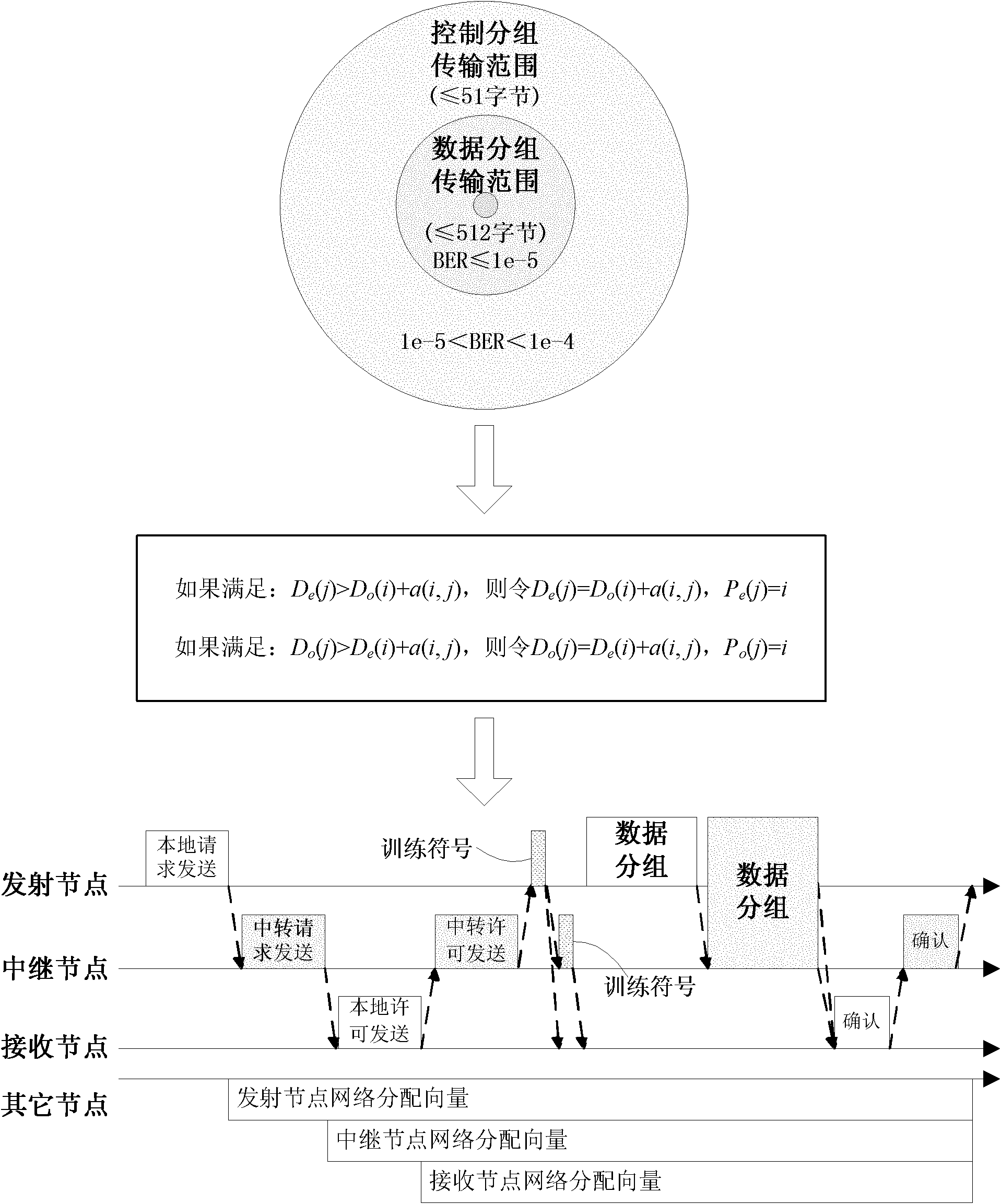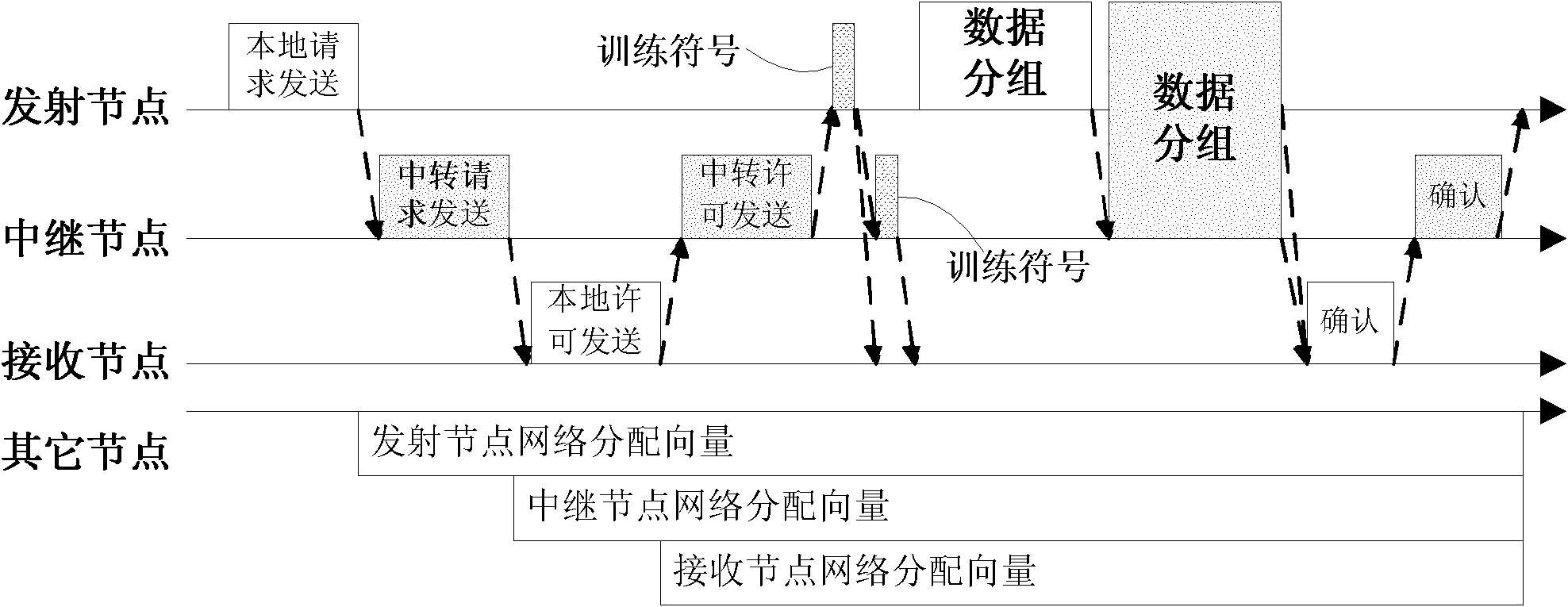Ad hoc network cooperative relay method based on distributed space-time coding
A space-time coding, network collaboration technology, applied in network topology, network traffic/resource management, error prevention/detection through diversity reception, etc. Achieve the effect of reducing latency, reducing network delay, and improving throughput
- Summary
- Abstract
- Description
- Claims
- Application Information
AI Technical Summary
Problems solved by technology
Method used
Image
Examples
Embodiment Construction
[0032] refer to figure 1 , the realization of the present invention comprises the following steps:
[0033] Step 1, calculate the communication range of the control packet.
[0034] (1a) Define r as the communication radius of the single-input single-output SISO mode, and the bit error rate within the communication radius is less than 10 -5 , used to transmit data packets and control packets whose length does not exceed 512 bytes, expressed as:
[0035] r = v E S 49998.5 · N 0
[0036] where E s is the average power of the signal received at the unit distance of the transmitting node, v is the path loss index, N 0 is the average noise power;
[0037] (1b) According to the communication radius of single-input-single-output SISO mode, the constraint condition of control group commu...
PUM
 Login to View More
Login to View More Abstract
Description
Claims
Application Information
 Login to View More
Login to View More - R&D
- Intellectual Property
- Life Sciences
- Materials
- Tech Scout
- Unparalleled Data Quality
- Higher Quality Content
- 60% Fewer Hallucinations
Browse by: Latest US Patents, China's latest patents, Technical Efficacy Thesaurus, Application Domain, Technology Topic, Popular Technical Reports.
© 2025 PatSnap. All rights reserved.Legal|Privacy policy|Modern Slavery Act Transparency Statement|Sitemap|About US| Contact US: help@patsnap.com



